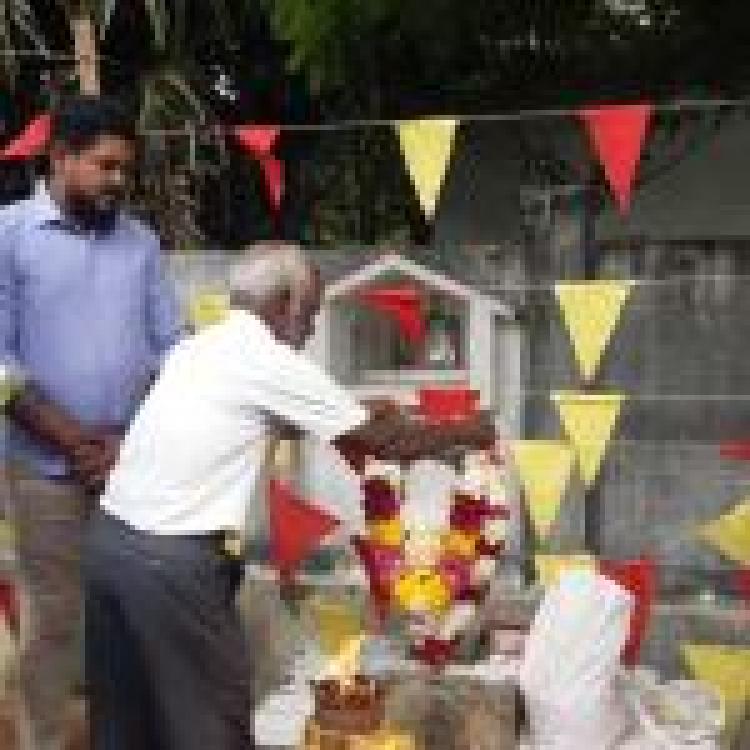.jpg) The 37th anniversary of the Kokkuvil Pirambadi massacre, when over fifty Tamil civilians were shot dead or crushed with an armoured vehicle by Indian Peace Keeping Forces (IPKF), was commemorated in Jaffna on Monday.
The 37th anniversary of the Kokkuvil Pirambadi massacre, when over fifty Tamil civilians were shot dead or crushed with an armoured vehicle by Indian Peace Keeping Forces (IPKF), was commemorated in Jaffna on Monday.
The massacre is claimed to be the first of many by Indian troops during their occupation of the Tamil homeland in the late eighties. During the event, a lamp was lit, and flowers were offered to remember the lives lost in the massacre.
.jpg)
On 11 October 1987, Indian forces in heavy military vehicles moved from their Elephant Pass military camp towards Jaffna. At the Puthukkaddu junction, the Indian forces jumped off their vehicles and started shooting at the people at the junction. Eight civilians were killed in this shooting and four more were injured.
According to a report from the North-East Secretariat on Human Rights (NESOHR), on October 12, 1987, the Indian forces stationed in the Palaly military camp advanced towards Jaffna town along the Railway Station Road. They subsequently rounded up civilians on Pirambadi Road and began firing at the residents in their homes. This senseless act of violence resulted in the deaths of 40 civilians, including women, children, and the elderly.
On the same day, another section of the IPKF moved along a different route and converged on Potpathi Road. They arrested the people living on that road and transported them to a community building located 400 meters north of the Kokuvil Pillayar temple. There, they ordered the people to lie on the road and ran heavy military vehicles over them.
.jpg)
“On that day, we heard heavy firing in the direction of my brother’s house,” said Thechenamoorthy Sivarajalingam, in an affidavit recorded by NESOHR. “I could go to his house only the next day around 7.00am. There I found the bodies of my brother, his wife, and their baby daughter inside the house. There were two more bodies in my brother’s house compound.”
“From about 1.00am on that day, we were all kept awake by the sound of gun fire,” said Nagalingam Nageswari, a survivor of the massacre. “About 5.30am, the Indian soldiers entered the compound of our house and asked us to come out of the house. While the soldiers were in our compound we heard shells exploding nearby. Then, perhaps frightened by the explosions, they turned their guns on us. They shot dead my brother and his six-year-old son Manoharan.”
A total of 64 lives were lost in this massacre. To date, no one has been held accountable.



